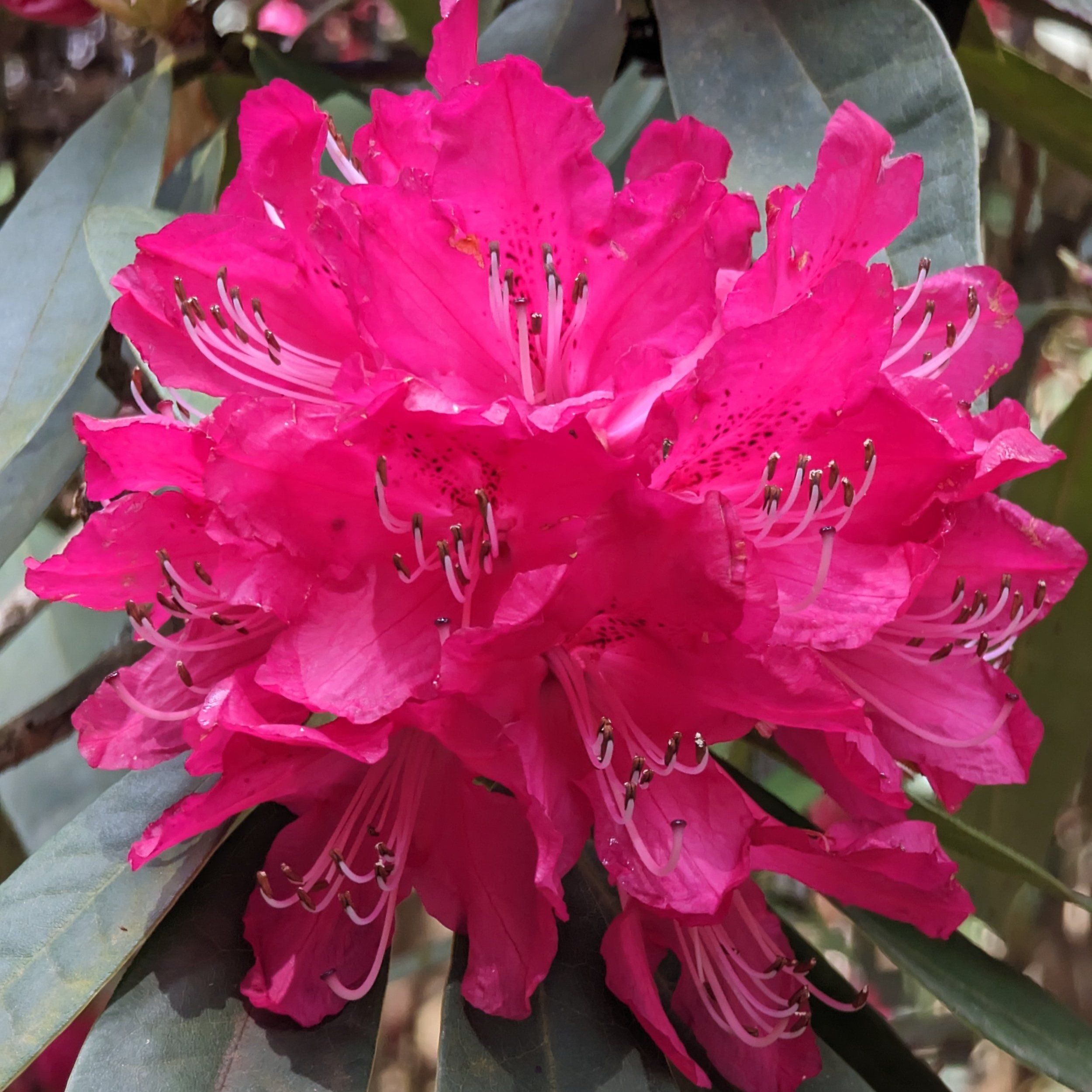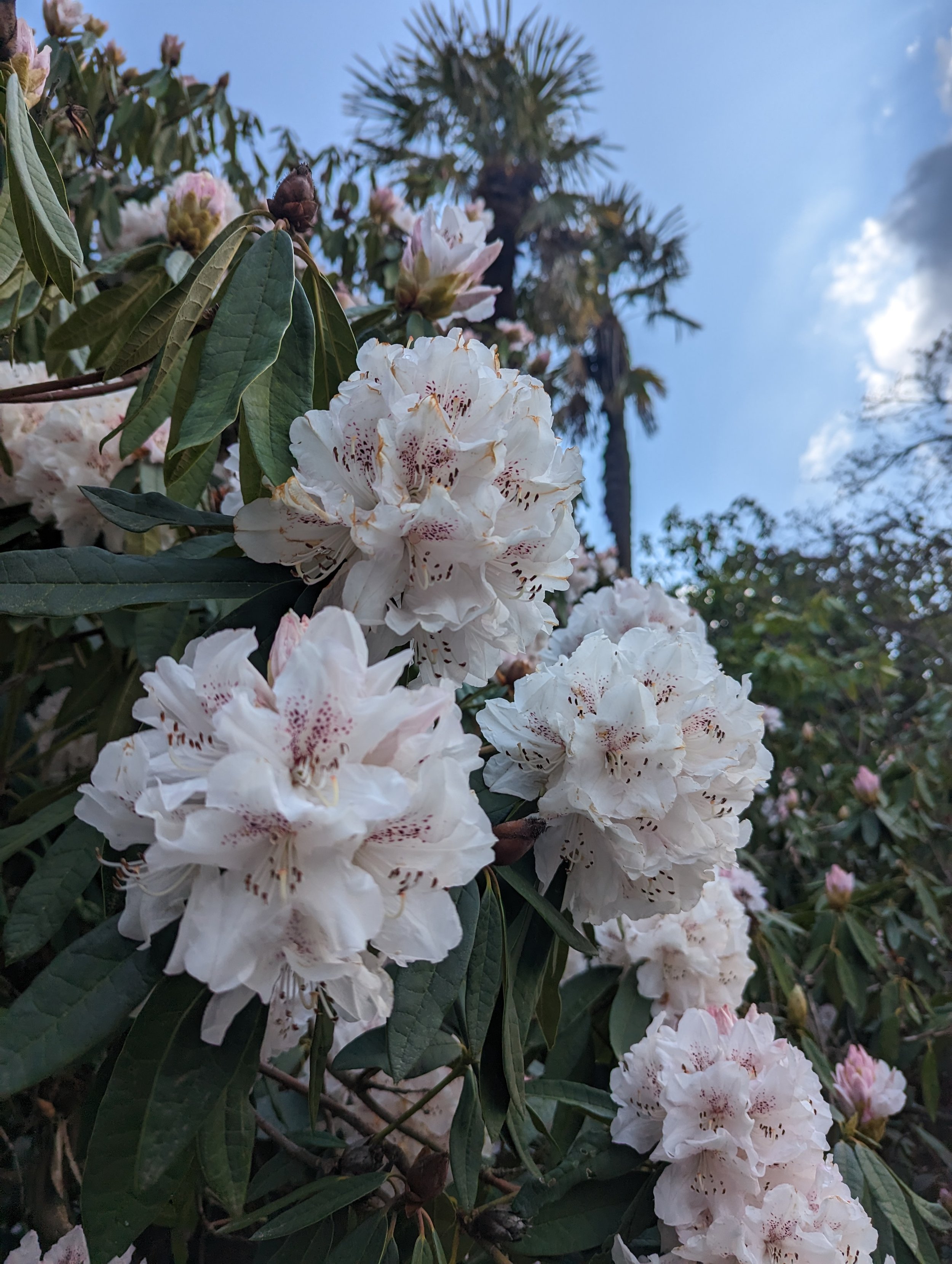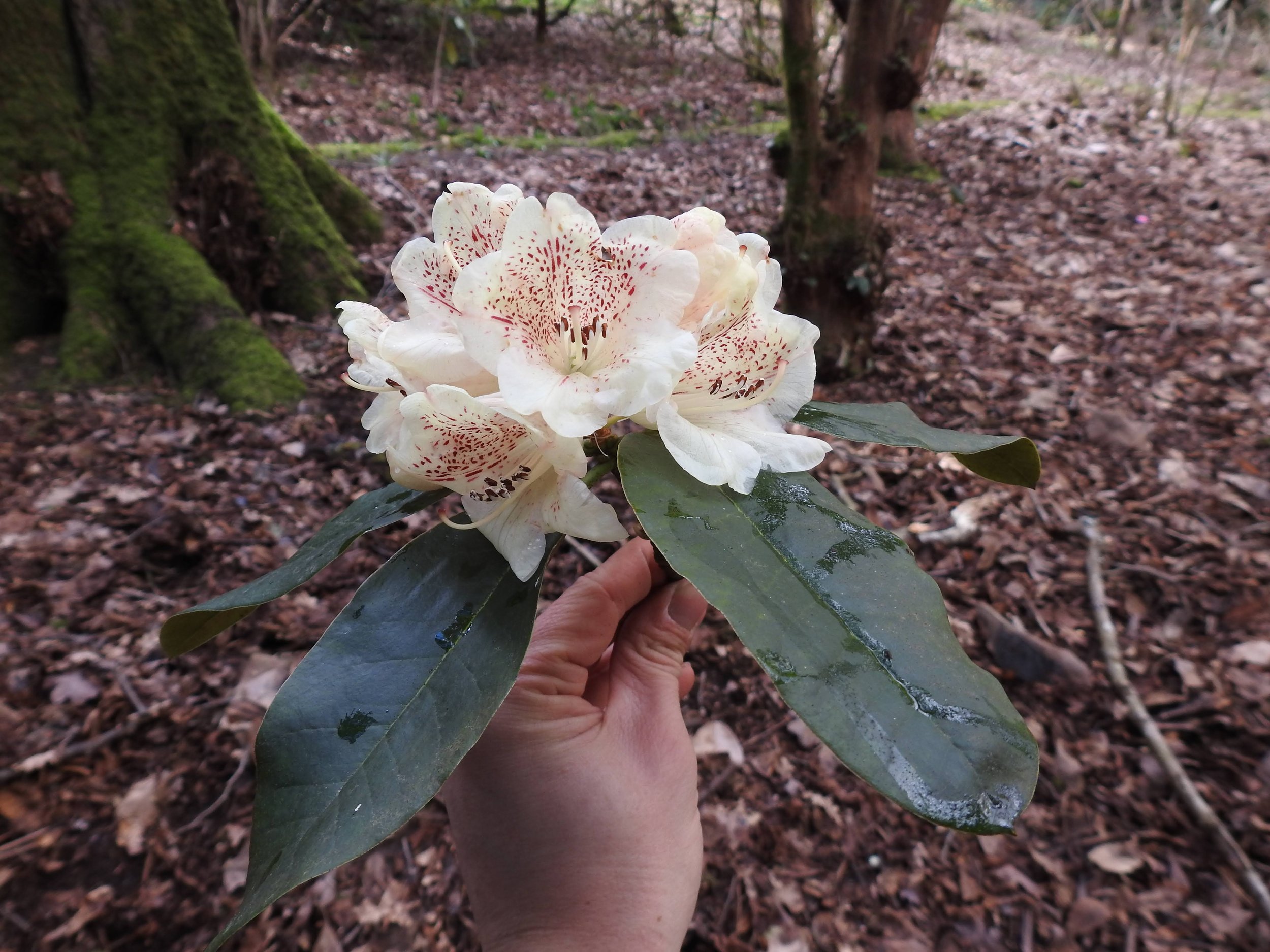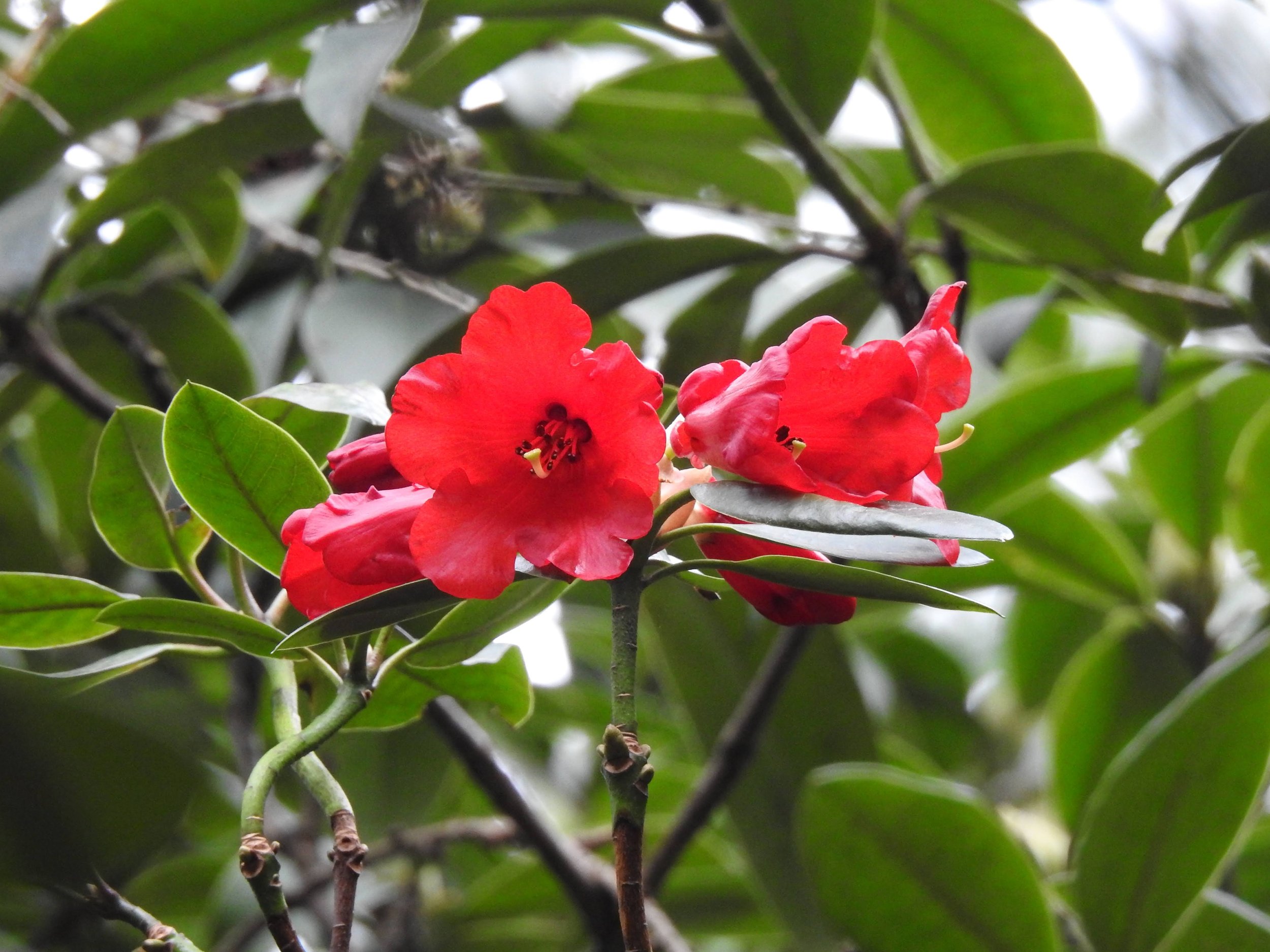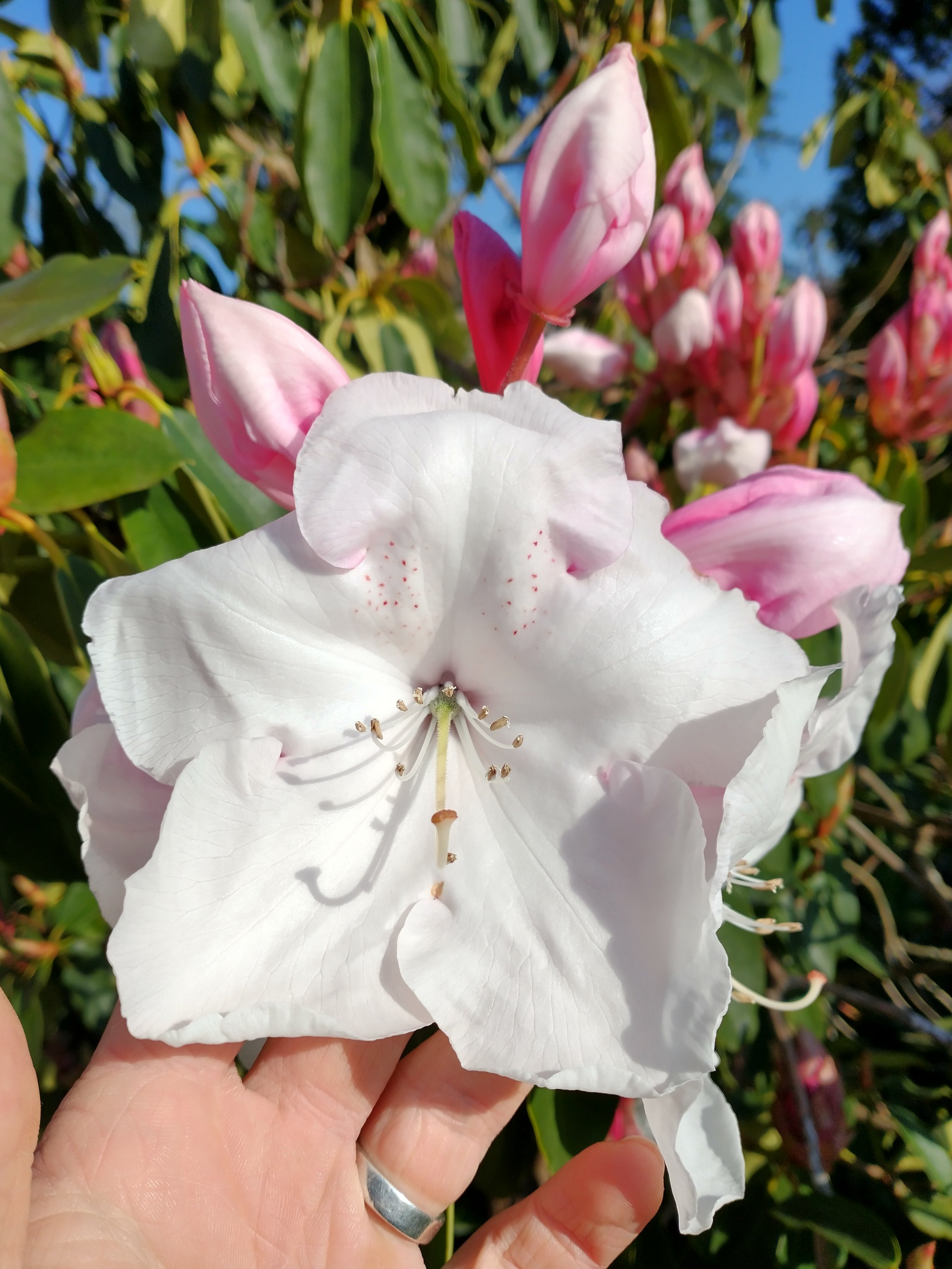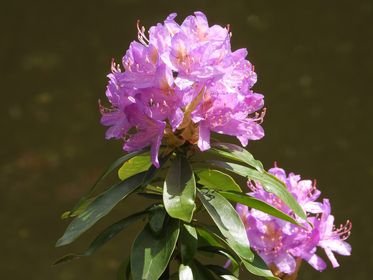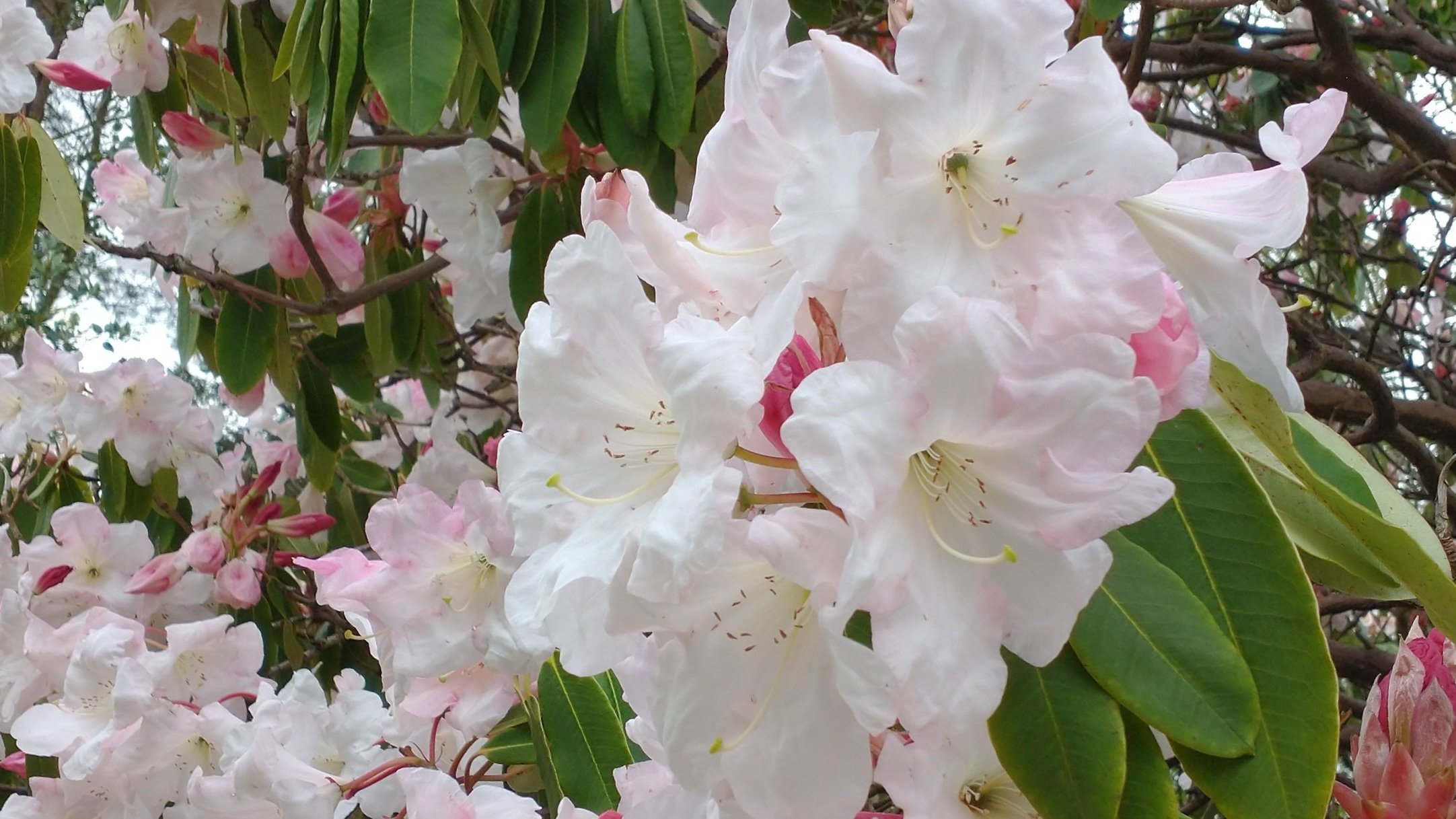Rhododendrons: Past, Present & Future
Rhododendrons are explosions of blooms that belong to the Ericaceae family, this species come in the form of woody shrubs or small trees that are known for their vivacious colour and scent. Here at Leonardslee, over the years, we’ve cultivated, raised and been made famous for our Rhododendrons. So here is the story of Leonardslee’s Rhododendrons history, modern-day status and future plans.
Fun Fact:
Other forms of the Ericasee family include Kalmia, heathers, cranberries and blueberries!
Past:
Rhododendrons are stunning flowering plants that impress with their vibrant hues and unique forms. These botanical wonders boast a fascinating past. The name "Rhododendron" comes from two Greek words, "rhodon," meaning rose, and "dendron," meaning tree, so it's no wonder that these plants are often called "Rose Trees". The Rhododendrons have a rich history, being mostly native to China and the Himalayas with several native to Asia, Europe, Australia and North America. This elegant flower has been designated as the National flower of Nepal, where it has been appreciated for its edible flowers that are relished for their tangy flavour. However, this plant carries a fascinating contradiction: while it is celebrated for its culinary uses, in nature, it is a symbol of danger, as it contains toxic compounds that pose a threat to humans, animals, and insects alike.
The first Rhododendron to be classified and named was Rhododendron hirsutism, discovered by the Flemish botanist Charles l'Ecluse in the 16th century. Later, in 1753, Linnaeus formally described the species in his Species Plantarum. Since then, hundreds of other Rhododendron species and hybrids have been discovered and cultivated, each with their unique features and allure. In 1901, Sir Edmund Loder began a journey that would forever tie the Rhododendron to Leonardslee Lakes & Gardens to each other. Through his extensive research where he investigated the results of pairing different cultivars of Rhododendrons together, Sir Edmund bred an entirely new species of Rhododendron plant here within the grounds.
Taking a species of Rhododendron ‘griffithianum’ obtained from the neighbouring South Lodge Estate and crossing the species with his own Rhododendron ‘fortunei’, Loder made leaps and bounds for the horticultural world and created the first ever Rhoderdendron Loderi. This was particularly poignant, as in the 1900 and the early 20th century big plant hunting expeditions had become popular and Loder amongst his peers, Sir Joseph Hooker, George Forrest, Frank Kingdon-ward and others had guided the way to floral/Rhododendron breeding. This expedition was a success and although it had been hard to say exactly which Rhododendron bloomed first, our gardeners suspect that it was Rhododendron loderi ‘White Diamond’. This was just the beginning and the years after consisted of Sir Edmund Loder breeding and raising a wide array of floral varieties that consisted of over 30 loderi’s as well a myriad of hybrids as well. During this period in history information was often shared freely and cuttings would have been exchanged for experimentations to take place freely. However, Loder did also raise a select few that can now only be found in one place around the world, and that is within Leonardslee Lakes & Gardens.
Present:
In the present day, the gardens are undergoing one of the largest restoration and revival plans in Europe, after its nine-year closure. Additionally, the journey that Sir Edmund Loder embarked upon is still being honoured by Leonardslee owner Penny Streeter OBE and being carried out by our expert and dedicated team of gardeners and volunteers. This involves ongoing maintenance, as well as the continuation of the horticultural developments of the grounds, some smaller and younger versions of the Loderi Collection have been planted within our Coronation Garden. Today, the flora can be seen all over the gardens, with gardening team planting the seedlings of the hybrids in easy to access locations for visitors to enjoy. As some of our Rhododendrons are deciduous and some are evergreen, we welcome visitors all year around to witness the results of our restoration. Evergreen versions can be recognised by their larger, paddle shaped leaves that are thick and leathery to the touch - whilst deciduous versions possess smaller, more elliptical shaped leaves. The leaves then encircle the blooms that grow, forming a group that gather the flowers into large clusters, called trusses. Giving a beautiful sight in every season.
As we restore the beauty of Leonardslee's Rhododendrons, we have been vigilant about removing the invasive Rhododendron ponticum. This dangerous beauty not only has the potential to spread like wildfire and damage our precious ecosystem, but it also hosts the Phytophthora fungus species responsible for sudden Oak death. Due to its harmful effects, it is illegal to plant this rhododendron in the wild, and its waste must be disposed of responsibly. As it thrives in moist climate and acidic soil, we at the gardens have been taking extra caution to track it down and prevent its growth, preserving the delicate balance of our natural surroundings.
Team Leonardslee at RHS Wisley
After the restoration, we have honoured Sir Edmund Loder's legacy by advocating for the recognition of his hybrids. We are thrilled to have been granted National Plant Collection status by Plant Heritage for our exceptional hybrid collection and the revival of two species of Victorian fern. Our collection features 42 distinct hybrids, 32 of which are considered threatened in cultivation and 17 of which are exclusive to Leonardslee. These hybrids have been highlighted throughout the gardens with informative signs detailing their fascinating backgrounds.
More recently, we have been actively showcasing our stunning Rhododendron Loder Collection at flower shows, and recently made our comeback at the Spring Ornamentals Show with RCM Group at RHS Wisely in March. Our display featured a variety of Rhododendron Loderi and was met with great success, earning us an impressive 14 prizes and one Highly Commended Award!
In our pursuit of preserving and sharing the beauty of the Rhododendron Loder ollection, we have taken our efforts beyond our own gardens. Our micro propagation endeavors have led us to share our prized plants with prestigious institutions, including the Duchy College. In December 2022, we proudly sent off a selection of our plants to be included in their historical collection of international importance, representing a small but significant contribution to the world of horticulture.
Future:
The future of Leonardslee's rhododendrons is bursting with potential and excitement! With the restoration process opening up new planting pockets, we have endless possibilities for creating stunning new displays. But it's not just about planting more of the same - we're also excited to explore the many other possibilities for these beautiful grounds. Plus, we still have a treasure trove of Loder family-raised rhododendrons waiting to be named and recognized by Plant Heritage. It's an unknown and thrilling journey, and we can't wait to see where it takes us!
In summary, the Rhododendrons at Leonardslee are not just mere decorative flora but also a fascinating piece of history and horticulture. To truly appreciate their beauty and significance, we invite you to experience them first-hand by visiting our gardens.
To truly appreciate their beauty and significance, we invite you to experience them first-hand by visiting our gardens.


